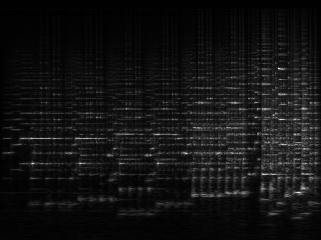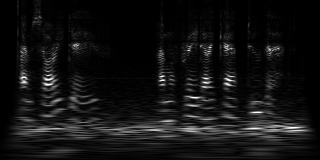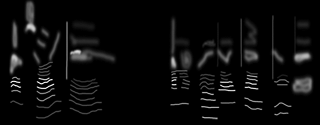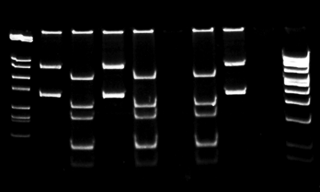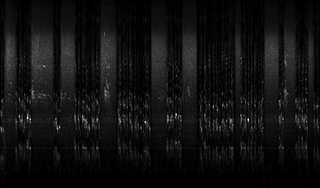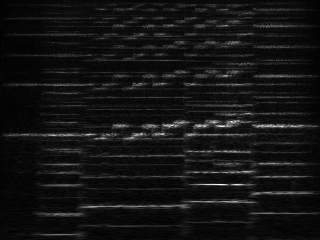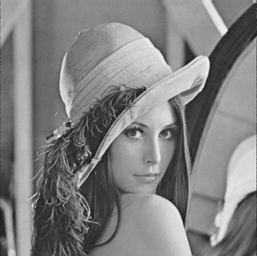|
Basic black and white image transmission
Lena transmitted over MP3
Thanks to linear frequency scaling (--linear) and sine synthesis we can now use the ARSS to transmit or store images as sound with hardly any loss in quality, provided that we do this under ideal conditions.
There are a few things to note about this very example. Because the final image is produced from the actual MP3, as opposed to a lossless reproduction of the synthesised sound, and because such a sound contains much more information than regular music, the MP3 is encoded using a bitrate 4 times larger than the usual one used for music. If we had used a lower bitrate, the image would have been very noisy, and with an even lower bitrate entire chunks of the image would have been blacked out. This is due to the fact that this type of sound contains a lot more information than the MP3 format was designed for.
It may also be of interest to note that this method of image transmission is actually as efficient as the method used for analog black and white television transmission, which means that we could theoretically transmit TV programs using this method within the same bandwidth as analog television, and with the same quality, under ideal conditions. One of the interesting aspects of this technique is that the images transmitted like this can be picked up and viewed by anyone with a spectrograph, and given the arguable universality of mathematics and time-frequency analysis, one may go as far as arguing that it would be a good way of transmitting images to eventual extraterrestrial civilisations, as we may expect them to be acquainted with such analysis techniques and to use them at some point when analysing strange unusual signals from outer space.
Back on Earth, you could try the following. Ask someone you know to give you a phone call and to play this sound. Record it, analyse it (with the following parameters : 300 Hz to 3400 Hz, height 256 pixels, 10 pps, linear) and if you see anything you recognize please send it to me (I don't have a telephone and I'd like to know how well it works).
Parameters :
- Base frequency : 20 Hz
- Ceiling frequency : 18,000 Hz
- Frequency resolution : about 35 Hz/line
- Time resolution : 32 pps
- Synthesis mode : sine
|

